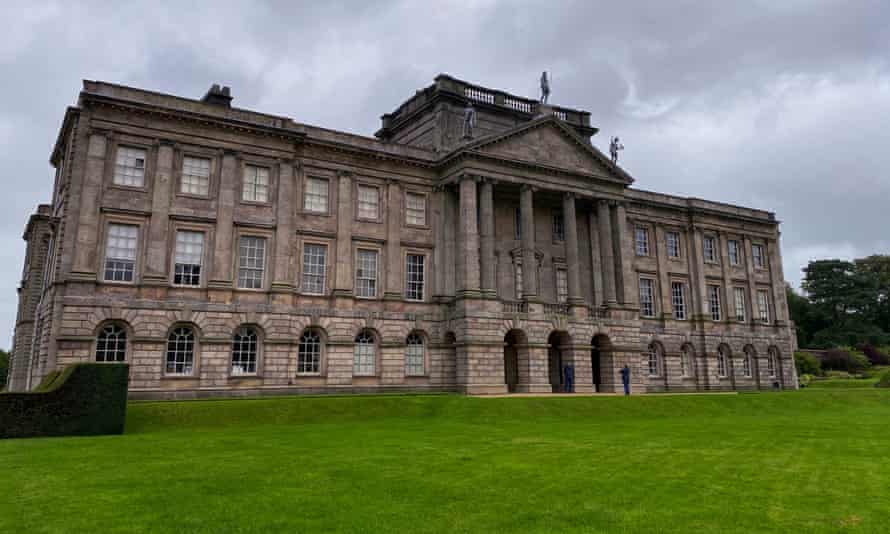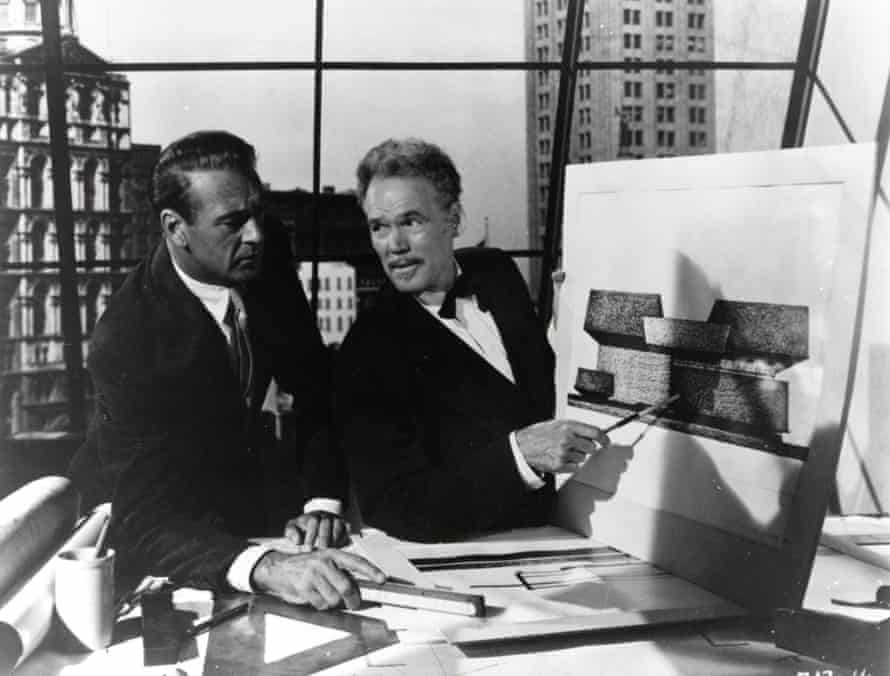Shared from www.theguardian.com
Rather as everybody supposedly thinks they have a book in them, I wonder if every novelist thinks their mind holds unbuilt architecture. I know I do. Not the technical stuff, obviously. The trigonometry and structural engineering. I mean the exciting freehand sketching bit at the start. The dreaming into existence of a building that didn’t exist before.
Of course, conjuring fictional structures on the page is about a lot more than simply satisfying unrealised ambitions: buildings have done an awful lot of work in many a fiction, shaping and expressing characters’ lives, concretising themes, rooting narratives in time and place.
My debut novel, Peterdown, involved imagining many such buildings. In the universe of the novel, a new five-runway airport has been built in the Thames estuary, and work is about to start on a Japanese-style bullet trainline that will connect the airport up to the regions. My fictional town, Peterdown has been chosen as the site of the railway’s splitter station, but to make way for the station a building in the town will have to be knocked down. On the shortlist – alongside a digital arts centre, and a dilapidated football stadium – is the Larkspur Hill, a sprawling brutalist housing estate that I was free to dream into existence without having to worry about budgets, planning restrictions, or whether or not it might blow over in the wind.
Needless to say, the estate is in fine company when it comes to fictional buildings. Here are some of my favourites.
1. Howards End by EM Forster
One may as well begin with Howards End, one of the most lovingly described buildings in all literature. “It is old and little, and altogether delightful – red brick… there’s a very big wych-elm … leaning a little over the house, and standing on the boundary between garden and meadow.” It is modelled consciously on Rooks Nest, the house in Hertfordshire where Forster lived as a child, and as Oliver Stallybrass says, it: “carries as great a structural load of values as any house in fiction.” Forster was unambiguous as to its significance to his vision: “In these English farms, if anywhere, one might see life steadily and see it whole.”
2. High-Rise by JG Ballard
Forster was not alone in believing that buildings are places that can condition the characters of the people that live in them. Ballard’s unnamed high-rise, a 40-storey behemoth in glass and concrete, which stands near the river, a couple of miles west of the City of London, is a “gigantic vertical zoo, its hundreds of cages stacked above each other”. That these are gilded cages, owned and occupied by lawyers, doctors and academics, doesn’t stop the residents descending into a state of orgiastic dog-barbecuing savagery: “In many ways, the high-rise was a model of all that technology had done to make possible the expression of a truly free psychopathology.”
3. The Cortlandt housing project in The Fountainhead by Ayn Rand
The architect behind Ballard’s high-rise is given a rough old time, but Rand is much kinder to Howard Roark. His masterpiece is the Cortlandt housing project, which he designs as “six buildings, 15 stories high, each made in the shape of an irregular star with arms extending from a central shaft … The buildings, of poured concrete, were a complex modelling of simple structural features; there was no ornament; none was needed; the shapes had the beauty of sculpture.” Unfortunately, when it is realised it has been traduced by a bunch of “second-handers”. Roark, being one of Rand’s typically ameliorative and compromising sorts, blows it up with a load of dynamite.
4. Mr Biswas’s house in A House for Mr Biswas by VS Naipaul
Not all fictional buildings would require dynamite to knock them down. A single well-aimed kick would probably do the job for Mr Biswas’s house: “two of the wooden pillars supporting the staircase landing were rotten, whittle away towards the bottom and green with damp … at the lightest breeze the sloping corrugated iron sheets rose in the middle and gave snaps which were like metallic sighs.” For all its faults, Biswas’s house is evidence that he is modern man, a self-authoring, property-owning individual, and it means he won’t have lived “without even attempting to lay claim to one’s portion of the earth; to have lived and died as one had been born, unnecessary and unaccommodated.”

5. Pemberley in Pride and Prejudice by Jane Austen
It’s impossible, on a list such as this, to overlook Austen, with her keen eye for property and its central role in the British class system. Mansfield Park or Northanger Abbey, so “rich in gothic ornaments”, might have worked, but Darcy’s pad Pemberley gets the nod: “It was a large, handsome, stone building, standing well on rising ground, and backed by a ridge of high woody hills … Elizabeth was delighted.” And who wouldn’t be?
6. The Castle by Franz Kafka
Kafka’s castle sits on a hill above a village: “It was neither a stronghold nor a new mansion, but a rambling pile consisting of innumerable small buildings closely packed together and of one or two storeys.” The protagonist K’s relationship to the castle might represent man’s alienation in the face of totalising bureaucracies, or our never-satisfied yearning for religious salvation. Either way, it’s an exemplar of what David Foster Wallace identified as the central Kafka joke: “That our endless and impossible journey toward home is in fact our home.” Which would make it an odd choice, you’d have thought, as a source of inspiration for a real building, but the Spanish architect Ricardo Bofill disagreed, using it as the template for an apartment block in 1968.
7. The Ministry of Love in Nineteen Eighty-Four by George Orwell
You get a better sense of the architecture of the Senate House-inspired Ministry of Truth – “an enormous pyramidical structure of glittering white concrete” – but it is The Ministry of Love, or Miniluv as it’s known in Newspeak, that stays with you longest. “It was a place impossible to enter except on official business, and then only by penetrating through a maze of barbed-wire entanglements, steel doors, and hidden machine-guns nests.” The building has no windows and is home to the most famous room in all literature, located “many metres underground, as deep down as it was possible to go.” It is, of course, Room 101 and “the thing that is in Room 101 is the worst thing in the world.”
8. 11 rue Simon-Crubellier in Life: A User’s Manual by Georges Perec
It was hard to leave out the old tenement in Tom McCarthy’s splendid Remainder, but when it comes to buildings in experimental fiction it is difficult to look beyond the apartment block at 11 rue Simon-Crubellier. Using a staircase “of questionable cleanliness”, the reader roams around the building from the grand apartments of the lower floors with Louis XIII armchairs up to Smautf the butler’s servant’s quarters in the eaves. The effect is akin to a cutaway illustration of a building where the front wall is removed allowing you to peer in at the outsized characters within.
9. The Library of Babel by Jorge Luis Borges
I have steered clear of fictional buildings in fantasy fiction as you could easily fill a Top 10 with them alone (Gormenghast, Bilbo Baggins’s hole etc), but I couldn’t not include Borges’ mind-bending Library of Babel. It is composed “of an indefinite and perhaps infinite number of hexagonal galleries, with vast air shafts between, surrounded by very low railings. From any of the hexagons one can see, interminably, the upper and lower floors.” The library is total and contains all possible books, including the autobiographies of the archangels and the treatise that Bede could have written (but did not). It “can only be the handiwork of a god”.
10. The Cathedral in The Spire by William Golding
It’s a shame that Lord of the Flies swallows all the oxygen when it comes to William Golding because his other books deserve a lot more attention than they get, particularly his book about Neanderthals, The Inheritors, and, most of all, this visionary masterpiece. Almost all the action takes place in a fictional cathedral on to which a monomaniacal dean, Jocelin, is demanding that builders graft a new 400ft spire despite everyone warning him that the building’s foundations will never support such a weight. Throughout, the reader perceives the cathedral from the dean’s reverent perspective. It is, as he puts it, “the bible in stone.”
Images and Article from www.theguardian.com

